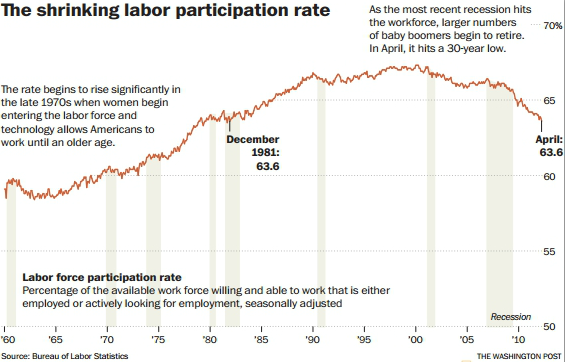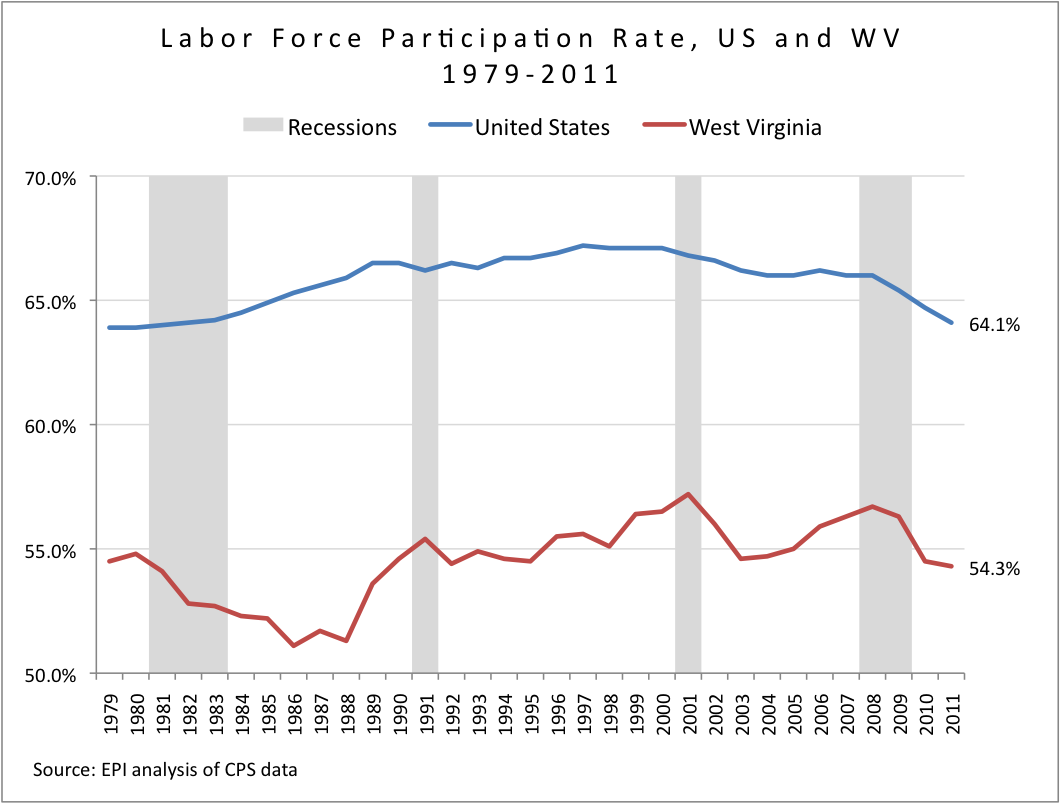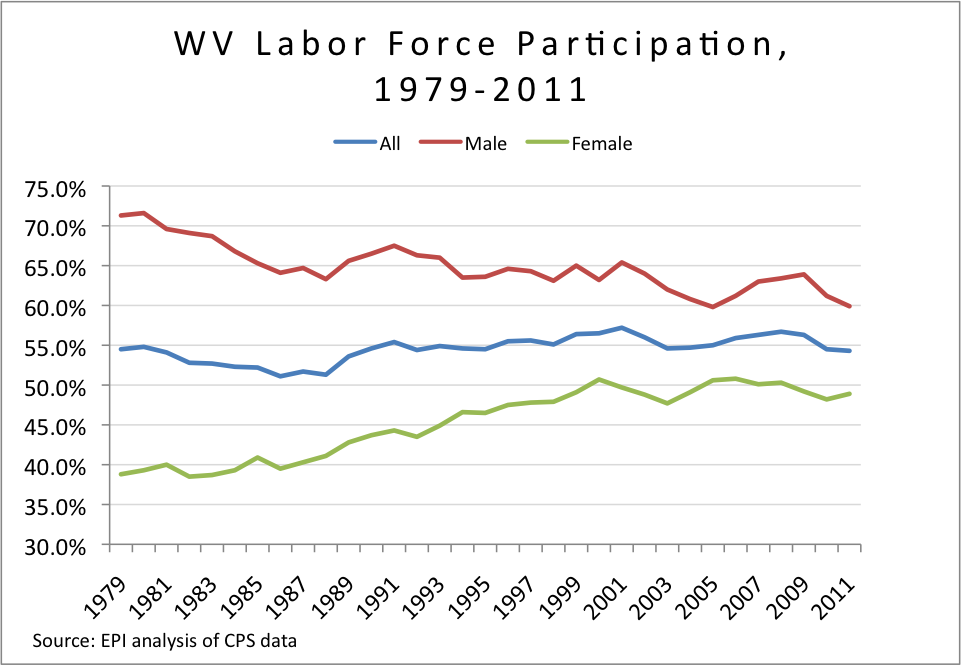There has a been a lot of chatter about the shrinkage in the U.S. labor force. Brad Delong takes us to two fed studies and Rorty Bomb provides the analysis. This graph from Ezra Klein shows the long-term and accelerated decline in labor force participation:

As the graph points out, the labor force participation rate in the U.S. is at a 30-year low. The labor force participation rate is the number of people that are either employed or unemployed divided by those 16 and older that are not institutionalized. Two stories have emerged to explain the decline: long-term demographic trends and the recent recession, with each explanation accounting for about half of the decline. The retiring of the baby-boomers is the central demographic factor that is causing a drop in labor force participation. The other crucial factor is the increasing number of workers leaving the workforce because they are discouraged (U-5 in BLS nomenclature) and can’t find work. These trends could have serious implications for the nation and West Virginia.


As we noted previously in Jobs Count:
The labor force participation rate rises and falls with demographic and population shifts, changes in disability rates, and structural reasons. During an economic downturn, labor force participation usually declines because unemployed workers give up looking for work due to a lack of employment opportunities or leave the labor force to pursue more education. When more jobs are added, the rate tends to increase as people return to work or seek employment. What is unusual about the current decline in West Virginia’s labor force participation rate is that it coincides with job growth in the state. This may indicate that many of the state’s workers do not have the skills to meet the demands of the current job market.
West Virginia’s participation rate could decline more in the future, because the state’s working age population (20-64) is projected to shrink by 104,000 from 2010 to 2035. This demographic change alone could lower West Virginia’s labor force participation rate 5.2 percentage points over the next 25
years, from 54.3 percent to 49.1 percent.
While there are many factors contributing to West Virginia’s low labor force participation, including a large and informal and rural economy, lack of economic opportunity, gender, deep poverty, and cultural issues, However, one crucial factor is the low educational level of the state’s labor force. In 2010, only 51 percent of the state’s workers had a post-secondary education, ranking West Virginia lowest in the nation. Approximately 26 percent of the labor force had some college experience or an associate’s degree, while only 25 percent had a bachelor’s degree or higher.
By improving post-secondary education attainment rates among adults, particularly those with low skills, West Virginia could also meet the demands of future employment needs.